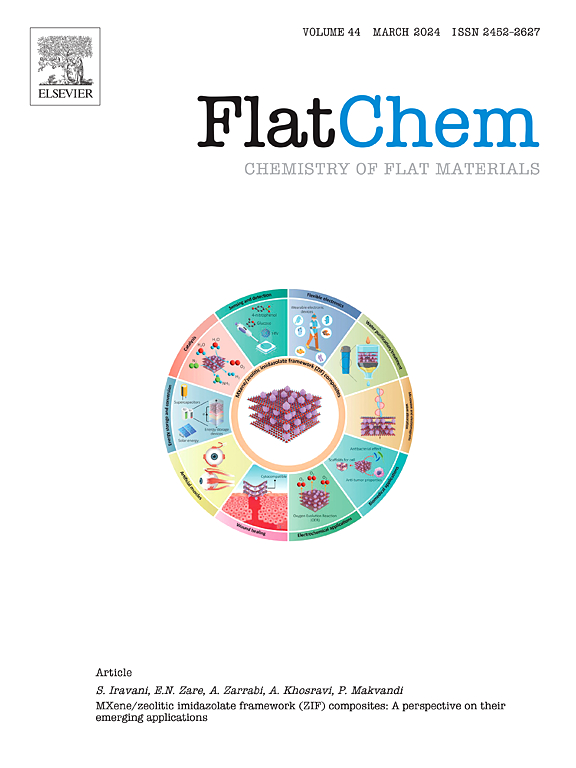Layered double hydroxide materials based next-generation photocatalytic system for CO2 reduction and H2 production applications
IF 6.2
3区 材料科学
Q2 CHEMISTRY, PHYSICAL
引用次数: 0
Abstract
Photocatalytic technology is advancing rapidly, offering enormous potential for fostering a sustainable future. Its ability to enable clean energy production through eco-friendly applications has made it a key component of global sustainability efforts. Layered double hydroxides (LDHs) have emerged as promising photocatalysts owing to their unique structural, electronic, and chemical properties. These qualities place LDHs at the forefront of addressing emerging energy and environmental challenges, further strengthening their importance in photocatalytic applications. The various compositions of LDHs, achieved through the selective variation of metal cations (M2+ and M3+), enable precise bandgap engineering to optimize light absorption. Furthermore, LDHs exhibit remarkable stability under ultraviolet and visible light, ensuring their durability over time. Their light-harvesting and catalytic activities are further enhanced when integrated with other materials, thereby expanding their application scope. These synergistic properties enable LDHs to excel in photocatalytic processes aimed at clean and sustainable energy generation. This review emphasizes LDH-based heterostructures for photocatalytic energy conversion, particularly in hydrogen (H2) production and carbon dioxide (CO2) reduction, highlighting their considerable potential to drive the development of a durable LDH photocatalytic system for future sustainable energy solutions is also presented.

基于层状双氢氧化物材料的下一代光催化系统用于CO2还原和H2生产
光催化技术正在迅速发展,为促进可持续发展的未来提供了巨大的潜力。它通过环保应用实现清洁能源生产的能力使其成为全球可持续发展努力的关键组成部分。层状双氢氧化物(LDHs)由于其独特的结构、电子和化学性质而成为一种很有前途的光催化剂。这些特性使ldh处于解决新兴能源和环境挑战的前沿,进一步加强了它们在光催化应用中的重要性。通过选择性改变金属阳离子(M2+和M3+)来实现LDHs的各种组成,使精确的带隙工程能够优化光吸收。此外,ldh在紫外线和可见光下表现出显著的稳定性,确保了它们的耐久性。与其他材料结合后,其光收集和催化活性进一步增强,从而扩大了其应用范围。这些协同特性使ldh在旨在清洁和可持续能源生产的光催化过程中表现出色。这篇综述强调了基于LDH的异质结构光催化能量转换,特别是在氢气(H2)生产和二氧化碳(CO2)还原方面,强调了它们在推动未来可持续能源解决方案中持久的LDH光催化系统的发展方面的巨大潜力。
本文章由计算机程序翻译,如有差异,请以英文原文为准。
求助全文
约1分钟内获得全文
求助全文
来源期刊

FlatChem
Multiple-
CiteScore
8.40
自引率
6.50%
发文量
104
审稿时长
26 days
期刊介绍:
FlatChem - Chemistry of Flat Materials, a new voice in the community, publishes original and significant, cutting-edge research related to the chemistry of graphene and related 2D & layered materials. The overall aim of the journal is to combine the chemistry and applications of these materials, where the submission of communications, full papers, and concepts should contain chemistry in a materials context, which can be both experimental and/or theoretical. In addition to original research articles, FlatChem also offers reviews, minireviews, highlights and perspectives on the future of this research area with the scientific leaders in fields related to Flat Materials. Topics of interest include, but are not limited to, the following: -Design, synthesis, applications and investigation of graphene, graphene related materials and other 2D & layered materials (for example Silicene, Germanene, Phosphorene, MXenes, Boron nitride, Transition metal dichalcogenides) -Characterization of these materials using all forms of spectroscopy and microscopy techniques -Chemical modification or functionalization and dispersion of these materials, as well as interactions with other materials -Exploring the surface chemistry of these materials for applications in: Sensors or detectors in electrochemical/Lab on a Chip devices, Composite materials, Membranes, Environment technology, Catalysis for energy storage and conversion (for example fuel cells, supercapacitors, batteries, hydrogen storage), Biomedical technology (drug delivery, biosensing, bioimaging)
 求助内容:
求助内容: 应助结果提醒方式:
应助结果提醒方式:


